Spanish Silk may not be the first thing that springs to mind in the Andalusian Countryside.
I have been to the Alpujarra endless times. Seeing these white villages perched on hillsides never bores me. Wandering around the narrow streets of these remote unspoilt corners of the Alpujarra is a true tonic.
Each time I am there my mind wanders, I think how it was to have lived here in the past. Last year I read The Hand of Fatima which although a novel does give some insight into this history. Something I have also been interested in is the Silk production in the Alpujarra.
Since hearing about this on many occasions I wanted to find out more. Not actually knowing until now how important it actually was.
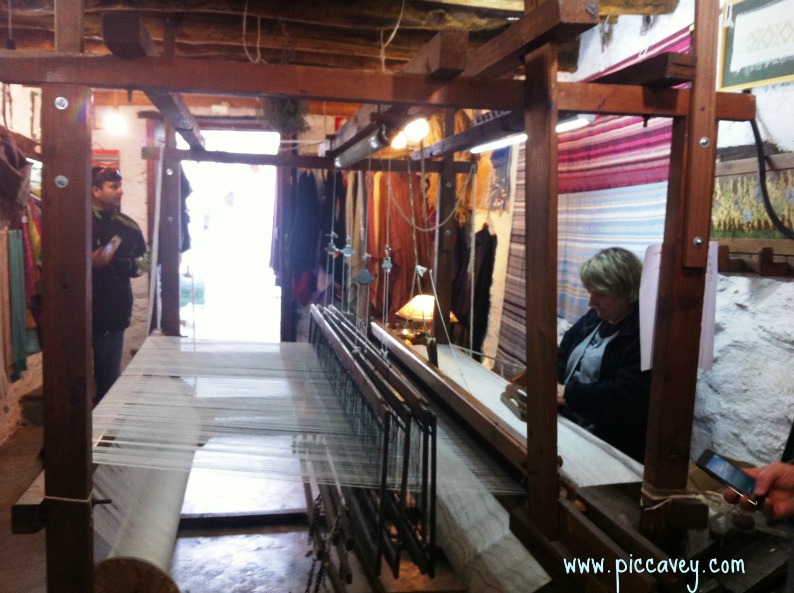
Silk production in the Alpujarra
In Summer I ventured past the three villages in the Barranco de Poquiera. I visited villages such as Juviles, Valor and Trévelez. This photo above is close to Mecina Bombaron and Los Berchules. These three villages produced the best quality silk of the time Juviles, Valor and Ugijar. Silks which even exceeded the quality of Egyptian and Syrian producers. There was even one reddish colour that was only possible to make in the Alpujarra area in silk fabric. When trying to create this colour in other places it wasn´t possible.
The main areas of Spanish silk production were the villages of Cástaras, Trevélez, Pitres, Pórtugos, Juviles, Valor and Ugíjar. The wealth of a village was calculated by the number of Mulberry trees or kilos of silk produced each season. Silk production seems to have began as early as the 9th century and continued on until 18th century. The boom was particularly clear from 11th century when the new port of Almeria was built making exporting silk easier.
11th Century Granada
Silks were sold all over Spain and Europe. Italian merchants traded with Alpujarra silk in 14th and 15th centuries. At the time the Alpujarra was known by the merchants as the Country of Silk. Over 500 villages and hamlets were peppered with mulberry trees and more than 4000 looms were counted in the Alpujarra at the peak of production.
At the V&A in London they have an exhibit of Granada Silk traded by Italian merchants made in the years 1360-1420. See the image> here
This photo is silk from the 15th century. Seen in the Alhambra Museum, Carlos V palace last year in the temporary exhbition a la Luz de Seda.
Alcaiceria & Realejo of Granada
Mulberry trees in the Alpujarra were the wy of taxation. The dealing and dying of the silk was done in Granada. The Realejo area of Granada was where raw silk was processed and coloured. The Alcaicería was the place where silk was taxed and traded.
In the present day the Alcaiceria is less than quarter of what it once was. A huge fire in 1800´s destroyed most of the Silk trading quarter of Granada. The devastating fire is said to have been burning for 8 days. The Alcaiceria streets (next to Granada Cathedral) are straighter than they would have been originally and of course reconstructed not original.
The decline of Spanish Silk
As each family could collect more than 40,000 silk worms it was lucrative business. Later Silk producers were heavily taxed by the Spanish Monarchs. The expulsion of the Moors from Granada in 15th century hit the silk trade considerably. The Mulberry trees were no longer allowed to be watered and many were even cut down. This reduced the production levels greatly and actually the trading of Silk in Spain would never recover.
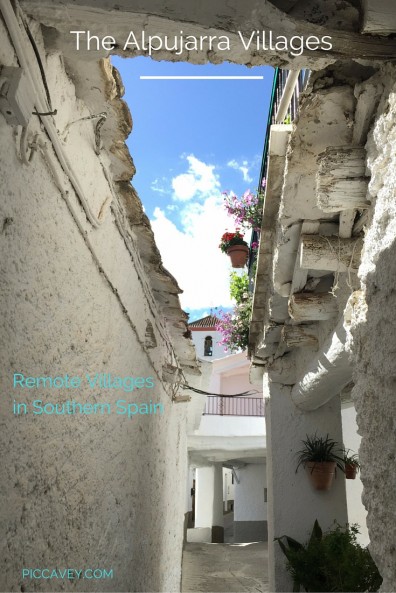
Spanish Silk Route
In mid 17th century a royal company tried to increase silk production but didn´t enjoy much success. Small numbers of silk producers in 18th-19th century were a tiny amount compared to the huge business at the time of the Nazrids. (photo above) The Silk trade was now firmly based in Japan and China. When you visit the Alpujarra, Lecrin Valley and Granada countryside you will still be able to pick out Mulberry trees in the landscape. Remember to take a look…
Related places to visit:
- Alcaiceria – These small streets next to Granada Cathedral and Bib Rambla are great to get a feel for Moorish Granada.
- Realejo – The Jewish quarter of Granada. Streets Pavaneras and San Matias are the centre of this district.
- Alpujarra villages: Pitres & Portugos – Both quaint villages in their own right, they were key to the silk trade hundreds of years ago. You can head to Pampaneira and see several working looms at Taller Textil. This characterful workshop sells shawls, throws and blankets. (pictured) (close to Abuela ili chocolate shop)
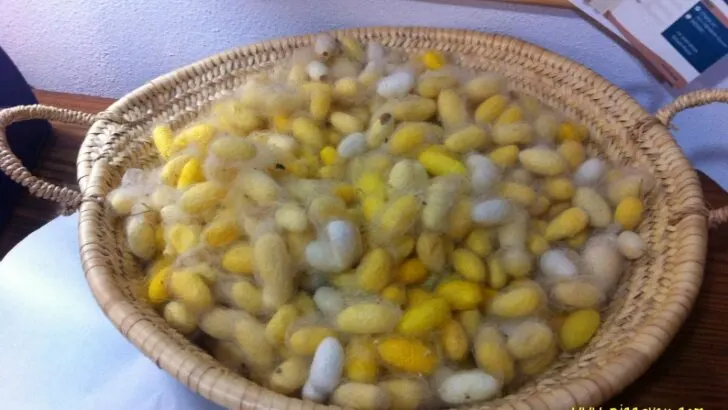
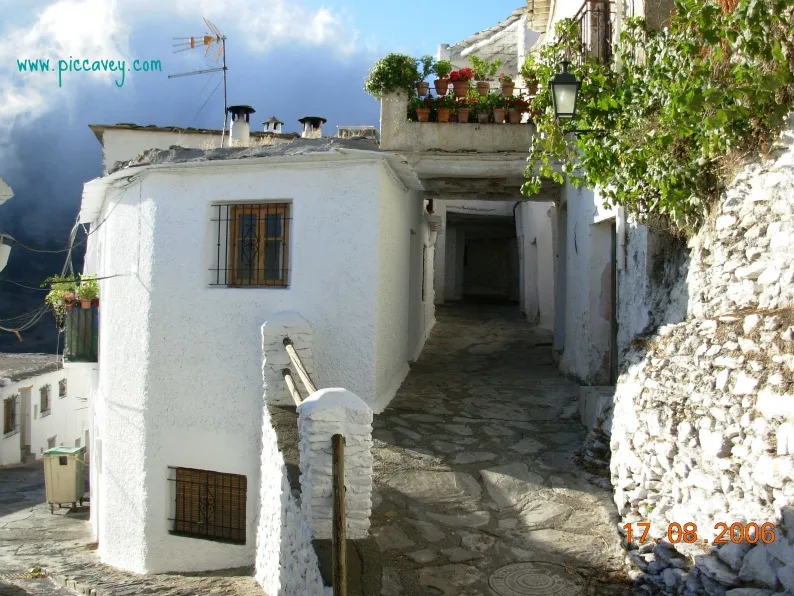


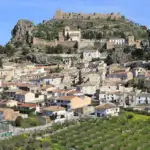


The disused railway is more likely to be linked to the mining activity in the area. Silk production was at its peak much earlier. in 1700 and 1800’s silk production was quite small and not the huge industry that it was in the 1400 and 1500’s due.
Hello, I’ve just heard of a disused railway near Cadiar that may have been related to local silk production. Do you have any more information on this / its history?
How interesting! Thanks for sharing!
So interested in your article. I have just done a historical (mainly political) tour in Barcelona where I have been living for 6 months. Now I have to go back to Andalucia where my house is. The tour placed in a plaza at one point where there were 3 mulberry trees. I have also lived in Hong Kong where of course, Chinese silk is readily available as is silk from Thailand.
Wouldn’t it be wonderful to revive the silk industry in Spain?
Regards, Christine
Yes, the silk trade in Andalucia is a fascinating part of local history and seems to be forgotten
I would be fabulous if a local artisan could recreate part of this past again in the present day
[…] I have looked further into the manufacture of silk from which the waistcoat is made, including looking at where silk fibres were originally produced. The production of silk originates from China, spreading to Japan and the Arabic countries, and later to western Europe including Spain. Silk production in Spain seems to have began as early as the 9th century and continued on until the 18th century. Eventually silk production began to decline in Spain due to the taxation of silk producers and the expulsion of the Moors from Granada in the 15th century. Nowadays silk production is firmly based in China and Japan, with only a see https://www.piccavey.com/spanish-silk/ […]
Loved the article. Coincidentally, I am in the middle of reading The Hand of Fatima. I am a history and map buff, and found little info on the Alpujarra area.
The Hand of Fatima is a historic novel so it´s loosely based on history but there are lots of things that are added to help the stor along. I loved reading it as I know the area really well and the story really came alive in my imagination. Thanks for stopping by to read this blogpost Dawn.
Really interesting article. Was there a law passed that the mulberry trees couldn’t be irrigated? If so, did it apply elsewhere?
Thanks
It wasn´t a law, but actions which made the industry practically impossible, trees were uprooted, silkworms and larvae were destroyed, this affected the Alpujarra and as far as Almeria, around Cabo de Gata (the are from the main production, to the port of Almeria)
Hi Molly. I’m leaving for Granada in 2 weeks with my 18 yr old daughter ( graduation/birthday gift). We’ve never visited before! We have a few days in Madrid, a few in Granada and Barcelona. I collect medieval and late middle ages textiles from spain and it lay. Are there any dealers or markets that may have a few “morsels”? Thanks!
Jill
I will send a few details to you on email
[…] Spanish Silk – Alpujarra secrets in historic GranadaSpanish Silk – Alpujarra secrets in historic Granada Spain. The quality of Alpujarra silk surpassed Egypt silk and was sold in Europe. The Alpujarra […]
No, I didn’t know about the silk connection in Granada either. V interesting post.
Hi
I am in the silk and alpaca fleece processing business have activities in Thailand but would like to do same in Spain Please advise to email if there are any active silk operations still active in Spain both home industry and factory
Regards
Brian
Will do, thanks
Nice post Molly.Not sure if you visited the Lonja de Seda in Valencia when you were here.It was the Silk Market built in 15th century and reflected the massive wealth accumulated by silk maerchants(often Jewish) in Valencia. Very big business here in Valencia(and indeed in Xativa) right up in the mid 1700s….I didnt know it was such a prolific industry in the lovely Alpujarreño villages.Thanks for the great info!
Yes I did, that building in Valencia is amazing!
Silk’s a new one on us, too. Thanks for the history lesson, Molly.
Never knew Spain was renowned for its silk! How fascinating Molly, very nice post. Typical that Spain was taxing industries into extinction even in those days…
Really sad that the industry didnt continue a few more years on.